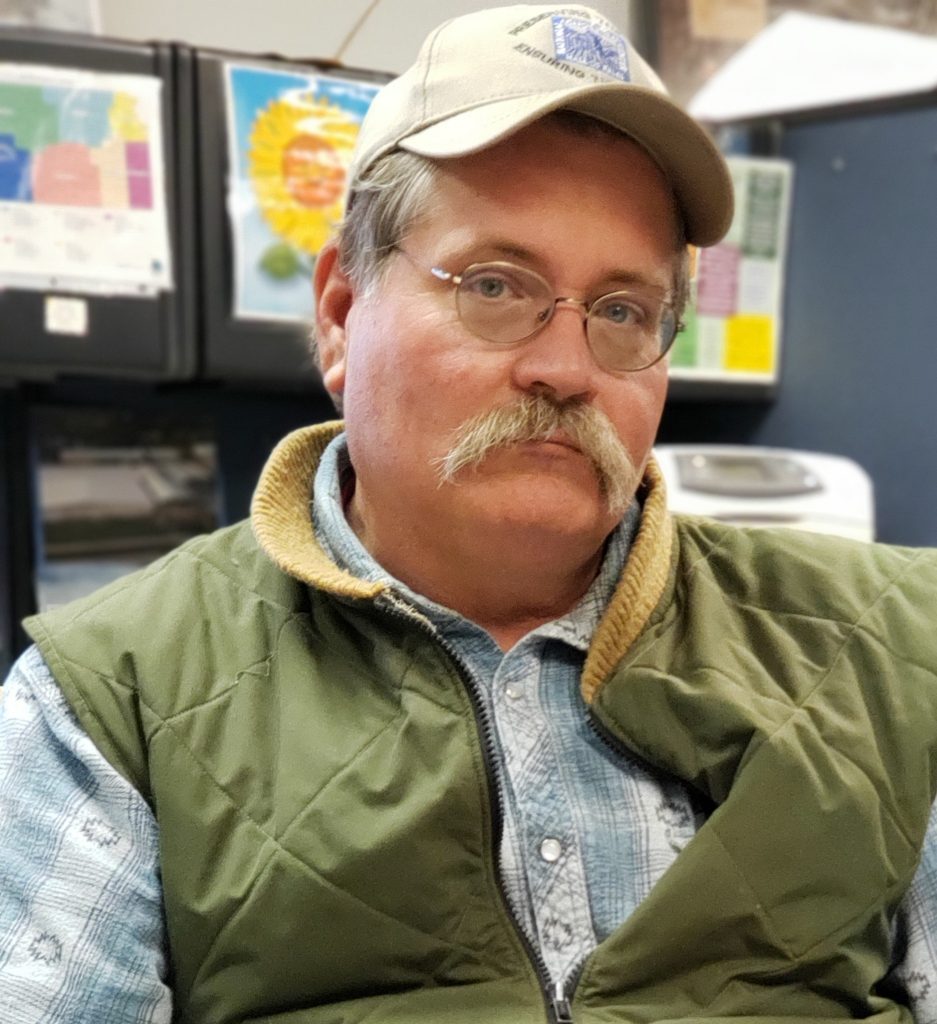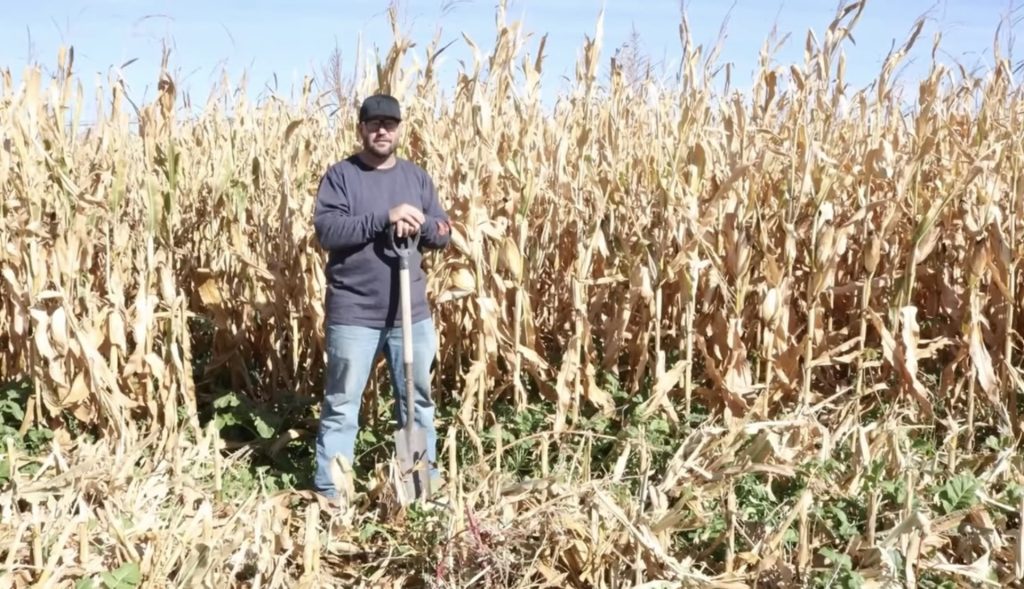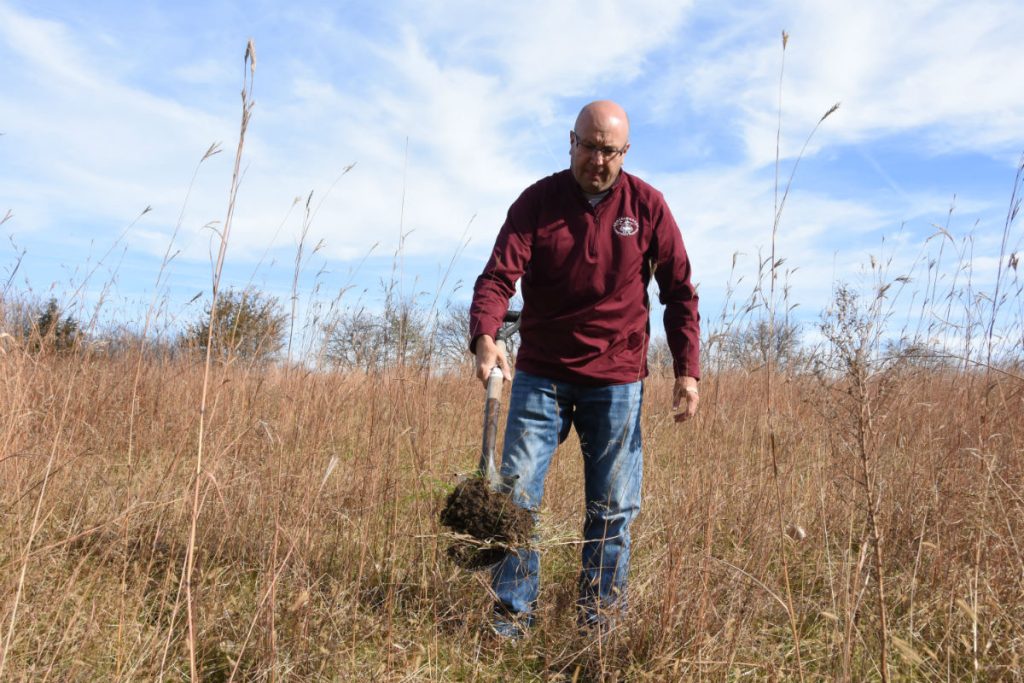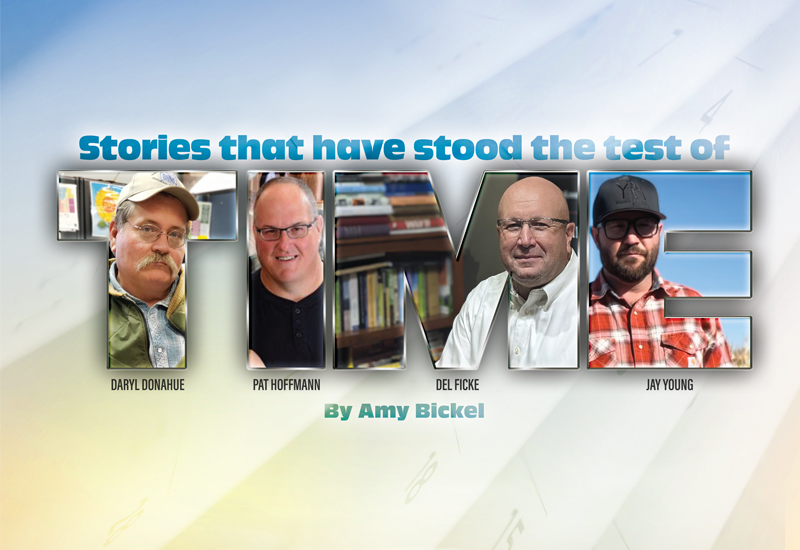In celebration of High Plains Journal’s 75th anniversary, we’re revisiting a few of the stories that have made a lasting impact on our readers.
These stories highlight the innovative approach of High Plains producers and how they have inspired others to reshape the future of farming.
Farm to bottle in Iowa
Pat and Amy Hoffmann, Earling, Iowa

After High Plains Journal spotlighted Iowa farmers Pat and Amy Hoffmann’s “farm-to-bottle” distillery in 2018, the response was immediate.
Readers from across the region reached out, some eager to learn how to transform their own farm-grown grain into spirits. The story also attracted new customers and social media followers, many of whom still purchase products from the Hoffmanns’ Lonely Oak Distillery today.
Since releasing their first bottle of North Forty Vodka on their Earling, Iowa, farm six years ago, Pat Hoffmann shared how Lonely Oak has expanded from that single spirit to a diverse lineup that now includes Steeple Ridge bourbons and rye whiskeys—plus unique barrel finishes.
The Hoffmanns have started growing specialty corn varieties like Bloody Butcher for distilling and also are working with a local geneticist to create a custom white corn to add a new element to their liquor.
COVID-19 posed challenges as the Hoffmanns were rolling out their whiskeys, limiting opportunities to reach new customers. Nevertheless, they have grown Lonely Oak’s distribution network and now sell in six states with plans to expand.
“Everything is getting older and better. We are continuing to grow and expand,” Hoffmann said, adding that they continue distilling while also managing their farming operations.
Next month, the Hoffmanns will release a four-grain bottled-in-bond bourbon, a style popular 60 to 70 years ago that is having a revival. This bourbon—made with corn, wheat, rye and oats—has aged for nearly five years. For bottled-in-bond certification, Hoffmann said, bourbon must be produced by the same distillery during a single distilling season (spring or fall) and aged at least four years in a bonded warehouse.
“It put us on the map,” Hoffmann said of the HPJ story. “People were so excited to see what we were doing. When our first bottle was finally realized, we had people driving for hundreds of miles to buy a bottle. Every time we have a new release, we have a release party, and people are still traveling.”
Hoffmann said they are shipping products nationwide. For more information or to place an order, visit lonelyoakdistillery.com.
Waging war on cedars
Daryl Donohue, Wilson County, Kansas

Daryl Donohue’s war on the redcedar isn’t over, but his advocacy has begun to melt the “green glacier” of resistance.
Since the original article in June 2022, Donohue has continued to share his methods with others. “It’s like a green glacier—kind of slow-moving but starting to catch on,” he said, noting that more ranchers are adopting his approach.
Donohue has been battling invasive redcedar trees on his Wilson County, Kansas, ranch since childhood. At age 6, his father handed him a hatchet to cut down his first cedar sapling.
Fifty years later, he is still fighting cedars but has developed an approach that sets him apart from many Flint Hills ranchers. Rather than only burn in spring, he sets “green-season” burns in late summer and early fall, aligning with nature’s cycles. This method reduces redcedar, woody invasives and sericea lespedeza, particularly in challenging areas like draws where spring burns often fall short.
Donohue sees late-summer burns as both safer and more effective, killing brush and cedars while enriching the grassland’s health—a benefit for cattle grazing.
His draws, once overgrown with cedars, are now lush with native plants, attracting prairie chickens and other wildlife. His pastures are recovering, gradually restoring the prairie landscape his ancestors once maintained.
Donohue is passionate about spreading the word on the benefits of prescribed burning, Reaching ranchers in the rural Midwest requires trusted information sources like HPJ, he said. “Not everyone is on social media, and not everyone gets the county paper,” he said.
Unconventional in the High Plains of Kansas
Jay Young, Tribune, Kansas

In the fall of 2023, farmers across the Midwest read about Jay Young’s unconventional approach in the semi-arid High Plains of Kansas—growing high-yield corn with limited nitrogen and no phosphorus. His method quickly piqued the curiosity of other producers.
His unconventional method piqued the curiosity of other producers. “I got a lot of encouragement from that article,” Young said, adding that his YouTube channel and website have also become resources for those interested in regenerative agriculture. “Farmers are starting to see that they can build up their soil’s biology rather than thinking there is a silver bullet using synthetic fertilizers.”
Five years ago, he began to shift his approach, recognizing soil as a finite resource and understanding that his future success depended on nurturing the land’s health. This realization led him to rethink his entire farming strategy, especially for his cornfields.
His experiments on his irrigated cornfields using minimal nitrogen and no phosphorus have consistently produced high yields—more than 200 bushels per acre. At the heart of Young’s method is the Johnson-Su bioreactor composting process, which introduces beneficial microbes into the soil, enhancing plant health while reducing fertilizer costs.
Today, Young has nearly 12,000 YouTube subscribers and regularly shares every aspect of his journey—the rewards as well as the challenges. Each season brings new insights into soil health and yield potential.
“Last year was disappointing,” Young told listeners, noting that leaving his cattle to rotational graze an extra week may have affected yields, which dipped below 200 bushels. “The corn looked good all season but didn’t yield as expected.”
This year seemed disappointing all year, too,” he said, “but when we harvested, it was actually better than last year.”
Despite a drought with less than 11 inches of rain on most of his fields—well below the region’s average—the results were encouraging. Young’s irrigated field produced more than 200 bushels per acre with just 120 pounds of nitrogen and no phosphorus. “That’s evidence the biology is working,” he said.
Young actively produces vlogs on his journey. Learn more at youtube.com/@youngredangus6041?si=GO-fBFZBnNHTqSan.
Smelling the sweet success in his soil
Del Ficke, Pleasant Dale, Nebraska

Nebraska farmer Del Ficke recalled how a 2018 story sparked significant interest in his approach to soil health.
Shortly after the High Plains Journal publication, he spoke at Soil Health U, an HPJ event that drew farmers from across the Midwest. Despite being under the weather, he delivered a slower-paced talk—a contrast to his usual rapid-fire style.
“It was probably the worst speech I ever gave, but it ended up being one of the best,” he said. “I slowed down, and people really connected with the message.”
“A lot of those people were there because they had read that story,” he added.
Ficke, a fifth-generation farmer, has been reshaping his farm’s future by transforming the soil he once mined. After a back injury in 1999 forced him to step away from farming, Ficke spent a few years in the medical field. During that time, he grew increasingly aware of the public’s misconceptions about agriculture and realized how his own farming practices had been harming the land.
In 2007, he returned to farming, but with a new approach centered on regenerative agriculture.
Ficke downsized his operation significantly, reducing it from 7,000 acres to 450 acres, and moved away from heavy chemical use. He implemented cover crops, minimized tillage and integrated livestock, particularly his unique Graze Master cattle, into his fields. This holistic approach, which includes rotational grazing and using cattle manure as a natural fertilizer, has led to remarkable improvements in soil health, including increased organic matter.
The article provided credibility that has helped him reach more farmers. “A publication like High Plains Journal brings a validity that our single voices don’t have,” he said, adding that with his regenerative agriculture consulting business, “It opened a lot of doors for us.”
The regenerative ag movement continues to grow, he added.
“People are coming to it because their backs are against the wall or because they want change. It’s mainstream now—there’s no turning back from it.
“Hopefully, it isn’t just regenerative agriculture anymore—we’ve just made ag better.”
To learn more about Ficke’s operation, visit fickecattle.com.
Amy Bickel can be reached at [email protected].



